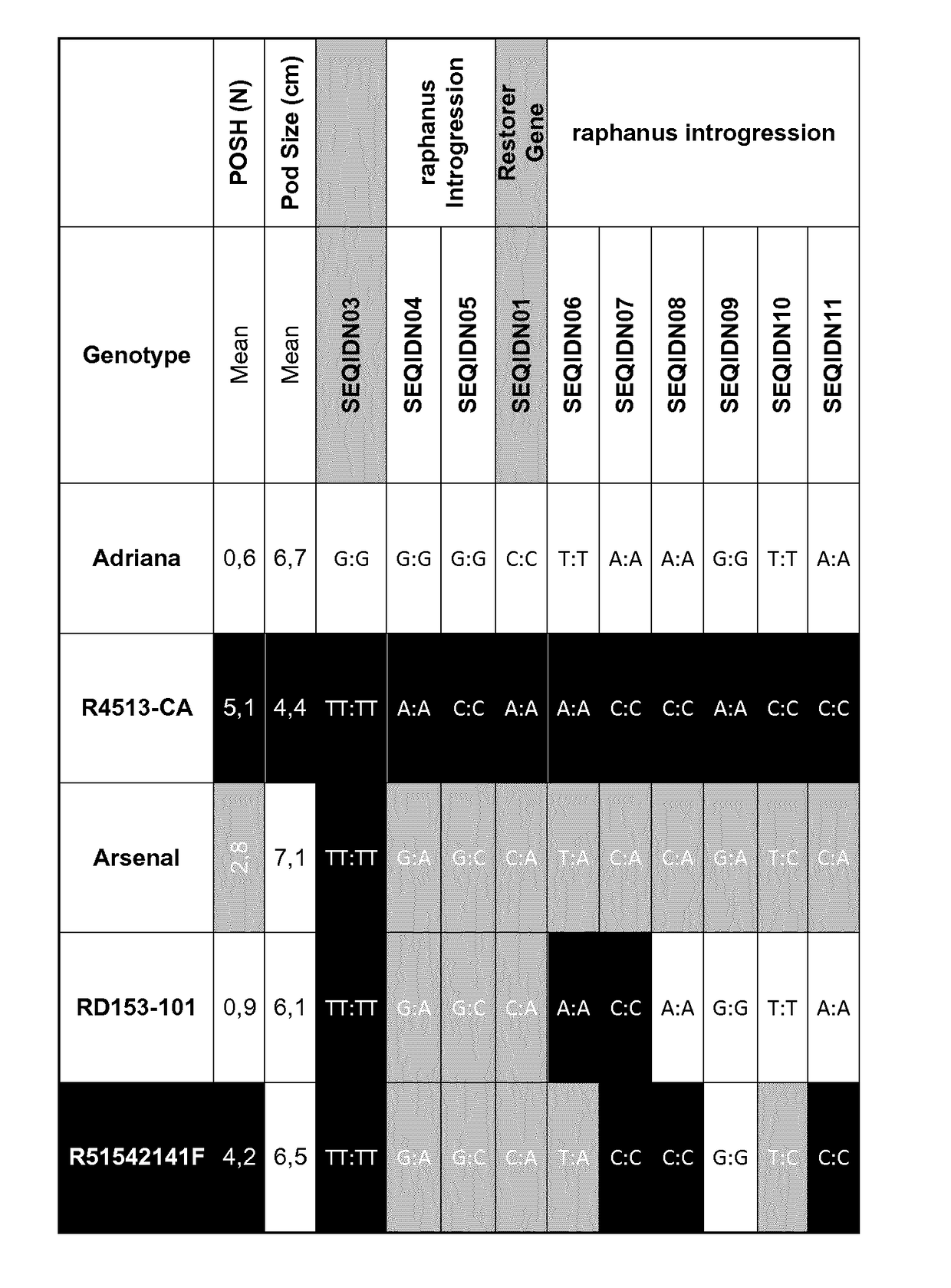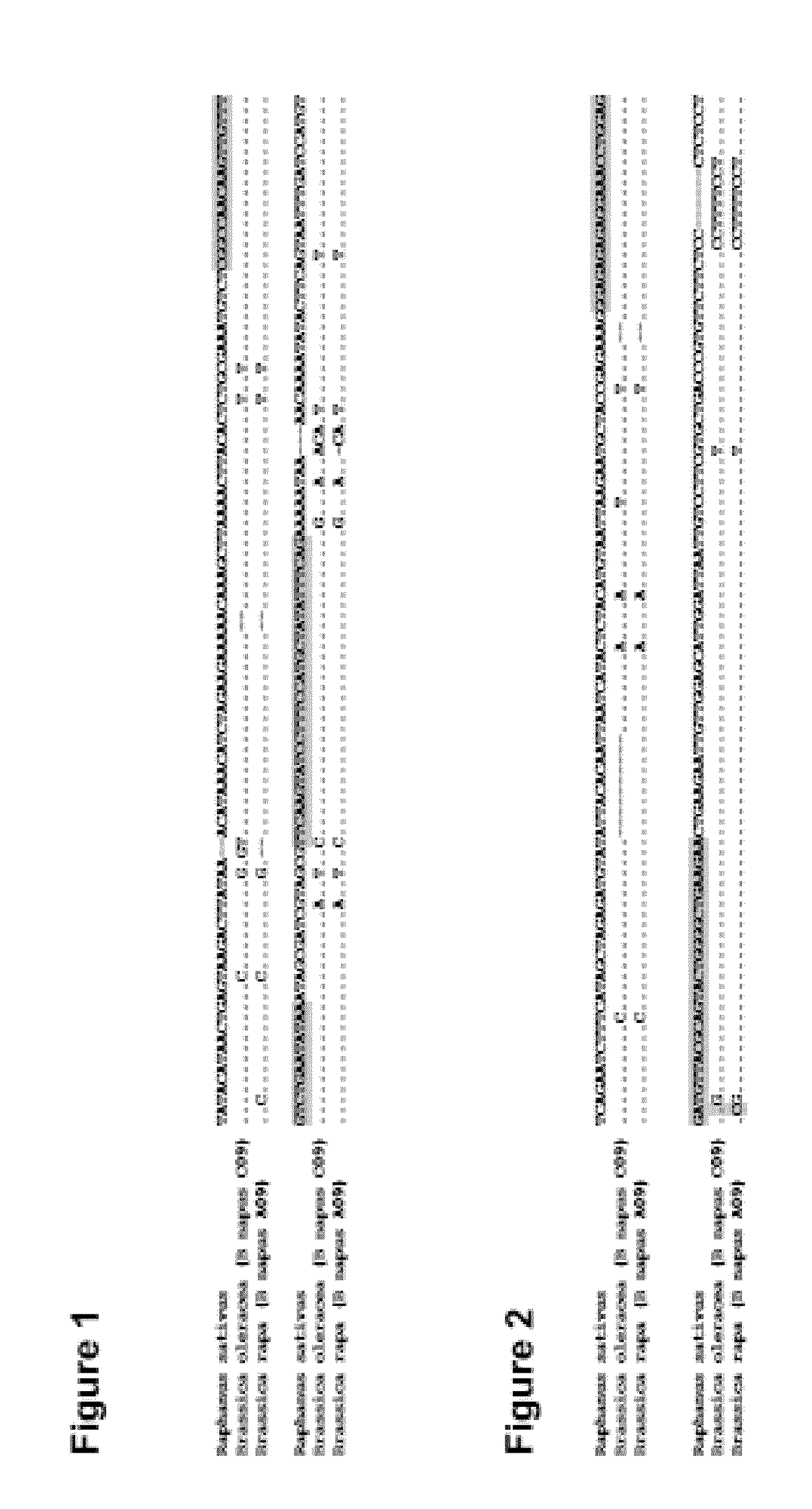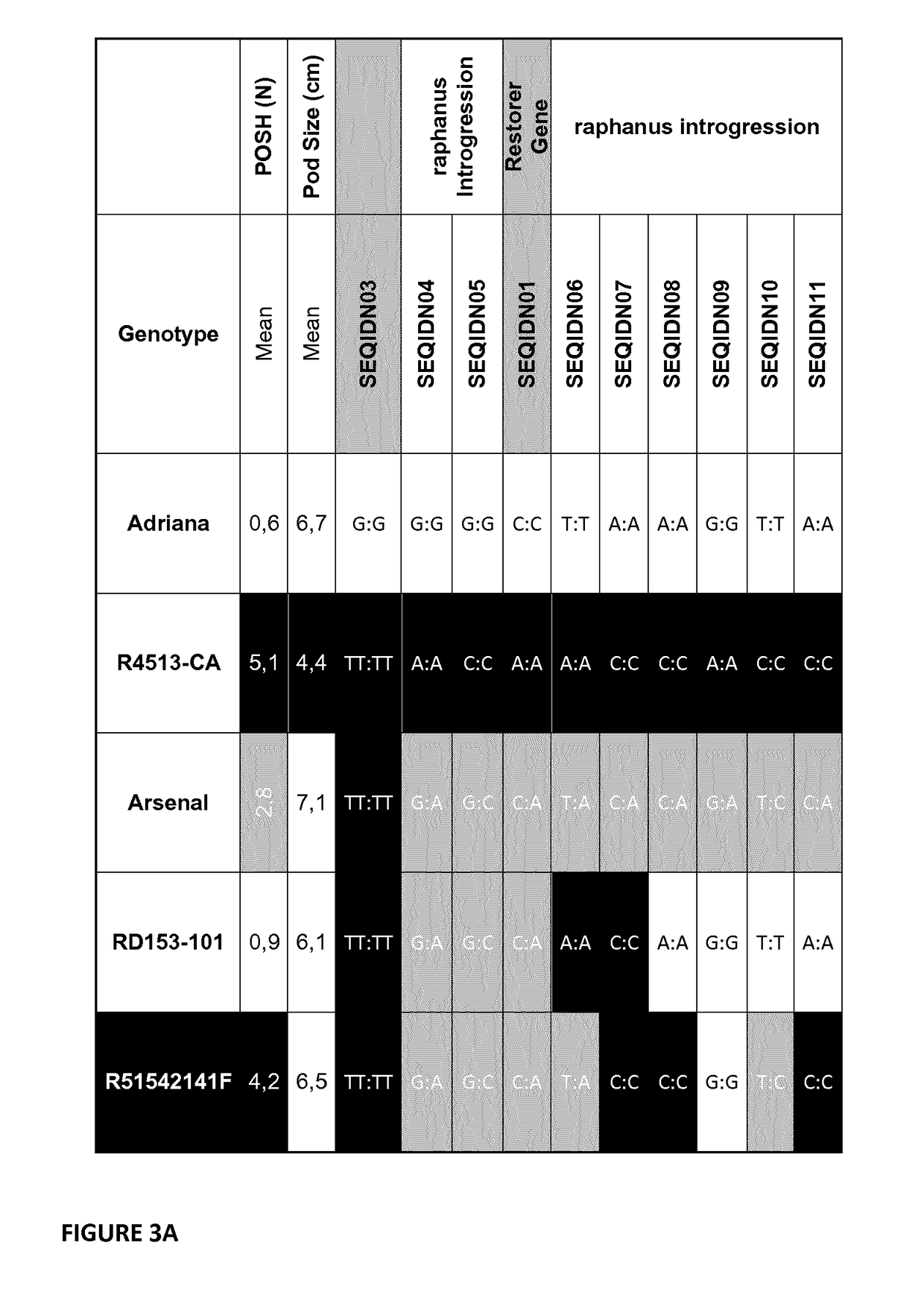Brassica plant with pod shattering tolerance
a technology of brassica plant and tolerance, which is applied in the field of brassica plant with tolerance, can solve the problems of long-term hampered use of rapeseed for the manufacture of meals, long-term detrimental impact on human health, and long-term restriction of food use of oilseed rape oil, and achieve the effect of improving the agronomical value of brassica plan
- Summary
- Abstract
- Description
- Claims
- Application Information
AI Technical Summary
Benefits of technology
Problems solved by technology
Method used
Image
Examples
example 2
rs Development
[0109]Characterization with molecular markers of the new recombinant plants is very difficult. Indeed, on one hand the introgression has replaced a part of the Brassica napus genome and it is difficult to find markers that work in both Raphanus and napus species. Moreover due to the low level of recombination rate in this region, it is not possible to map the position of markers on the introgression based on linkage. Therefore the possibilities to describe the introgression were very limited. To address the problem of SNP discovery, we employed a Next Generation Sequencing (NGS)-based approach on the transcriptome of vegetative tissue.
[0110]Specifically 118 fixed restorer lines and 27 fixed female lines were sampled at 4-weeks post emergence stage and flush frozen in preparation for RNA extraction. RNA concentration of each combined sample was measured using 1 μl of each RNA sample on the Qubit fluorometer (Invitrogen). The current version IIlumina mRNA-Seq kit was use...
example 3
Characterization of the New Recombinant Lines
[0116]The stability of the pod can be measured with a test developed by Dr. Schulz at the Institute LFA-Mecklenburg-Vorpommern as described in March 2013 in Abschlussbericht 2013, Forschungsnummer 1 / 29, im Forschungskomplex, Verfahrensoptimierung zur Verbesserung der Wirtschaftlichkeit (http: / / www.landwirtschaft-mv.de / cms2 / LFA_prod / LFA / content / de / Fachinformationen / Acker-_und_Pflanzenbau / Winterraps / Produktionstechnik / AB_Platzfestigkeit_2013 / Online_Forschungsbericht_Platzfestigkeit_1_29.pdf). Pods are sampled at complete maturity (BBCH 97) from the middle part of the main stem. After sampling the pods are kept under dry conditions at room temperature for at least 21 days in order to ensure complete maturity of all pods. In the test the measured parameter for pod shatter tolerance is the tension measured to tear the two halves of the pod apart. For the measurement a Sauter Digital Force Gauge FK 50 was used. 20 individual pods of each genoty...
example 4
ation of Other Markers Strongly Associated to POSH Locus
[0120]The inventors have shown that surprisingly a FRUITFULL locus is localized on the Raphanus introgression as all the markers developed from the FRUITFULL gene sequence as identified on the Raphanus genome are strongly associated with the POSH locus markers described above (FIG. 5).
[0121]In particular the inventors have also identified the predicted Open Reading Frame (SEQ ID NO:31) of the Raphanus FRUITFUL gene and the corresponding protein as predicted (SEQ ID NO:32) or corresponding predicted cDNA (SEQ ID NO:33). Such sequences may further advantageously be used to identify Raphanus SNP associated to POSH+ locus in Brassica plants.
[0122]Two different types of markers were identified. A first type is not genome specific. It is derived from a classic design with a SNP between napus and Raphanus, and a common marker shared with oleracea, rapa and radish. Thus, the one allele will amplify B. rapa and B. Oleracea, and the othe...
PUM
| Property | Measurement | Unit |
|---|---|---|
| humidity | aaaaa | aaaaa |
| tension | aaaaa | aaaaa |
| tension | aaaaa | aaaaa |
Abstract
Description
Claims
Application Information
 Login to View More
Login to View More - R&D
- Intellectual Property
- Life Sciences
- Materials
- Tech Scout
- Unparalleled Data Quality
- Higher Quality Content
- 60% Fewer Hallucinations
Browse by: Latest US Patents, China's latest patents, Technical Efficacy Thesaurus, Application Domain, Technology Topic, Popular Technical Reports.
© 2025 PatSnap. All rights reserved.Legal|Privacy policy|Modern Slavery Act Transparency Statement|Sitemap|About US| Contact US: help@patsnap.com



